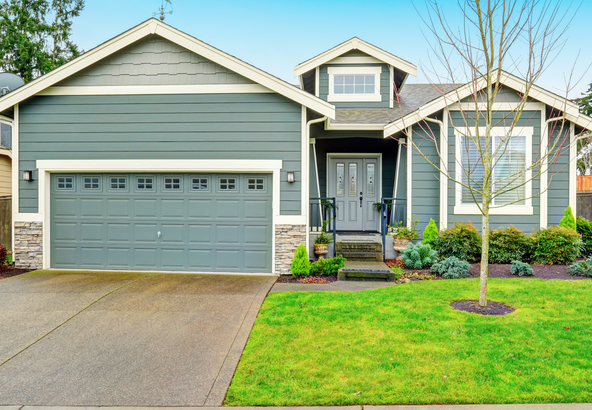Protect Your California Home: A Guide to Fireproof Construction
By Estate Realty Group | Steve Portaro
The threat of wildfires is an all-too-familiar reality here in California. With flames spreading quickly through dry conditions and strong winds, it’s crucial for homeowners to consider fire-resistant building methods. Below, we’ll explore how Insulated Concrete Forms (ICFs) can help safeguard your home—plus additional strategies for keeping your family safe when fire strikes.
1. What Are Insulated Concrete Forms?
Insulated Concrete Forms (ICFs) are interlocking modular units made from fire-retardant expanded polystyrene foam. Once in place, these forms are filled with concrete to create solid, highly insulated walls that stand up against fire, sound, and extreme weather.
Benefits of ICFs
- Fire Resistance: ICFs can withstand fire for up to four hours, providing extra time for evacuation and firefighting efforts.
- Energy Efficiency: The insulation properties of ICFs help regulate indoor temperatures, potentially reducing utility bills.
- Durability: Concrete walls can handle earthquakes, hurricanes, and other natural disasters.
- Long-Term Savings: While ICFs may cost more up front, you can save on energy bills, insurance premiums, and future repairs.
2. Essential Fire-Resistant Components
Making your home fire-ready doesn’t stop at the walls. Consider these additional elements for comprehensive protection.
Roofing Options
Your roof is particularly vulnerable to airborne embers. Opt for:
- Concrete or Clay Tiles
- Metal Roofing
- Slate
- Fiberglass-Based Asphalt Shingles
Flame-Resistant Siding
Your home’s exterior walls are your first barrier against a spreading fire. Look for:
- Fiber Cement Siding
- Stucco
- Metal Siding
- Brick or Stone Veneer
Windows and Doors
Weak points like windows and doors need extra attention:
- Fire-Rated Doors for entrances and garages
- Dual-Paned or Tempered Glass Windows
- Metal Frames for doors and windows
- Proper Sealing and fire-retardant treatments
3. Advanced Fire Protection Techniques
Fire-Safe Landscaping
Smart landscaping can slow the spread of fire:
- Remove Flammable Vegetation within 30 feet of the house
- Prune Trees to prevent fires from spreading to the canopy
- Use Fire-Resistant Plants like blue fescue, yarrow, and succulents
- Integrate Hardscaping with stone walls or patios
Sprinkler Systems and Alarms
- Whole-House Sprinkler System for instant fire suppression
- Smoke Detectors in every room and hallway
- Carbon Monoxide Detectors on each floor
- Monitored Fire Alarm Systems for added peace of mind
4. Design Considerations and Building Codes
When planning your new home, design with fire safety in mind:
- Multiple Exit Routes and wide hallways
- Safe Rooms with fire-resistant walls and doors
- Non-Combustible Flooring such as tile or concrete
- Fire-Resistant Drywall or gypsum board
Tip: Always check local building codes and guidelines. Consult with fire safety inspectors to ensure your home meets or exceeds all requirements.
5. Cost and Insurance Benefits
While fire-resistant construction may be pricier initially, you could see long-term savings on insurance premiums, maintenance, and repairs. Many insurers offer discounts or better coverage for homes with robust fire protection features.
6. Maintaining Your Fireproof Home
Regular upkeep preserves your investment and keeps your home ready for emergencies:
- Inspect Roofing and Siding for damage annually
- Clean Gutters to remove flammable debris
- Maintain Landscaping by trimming and removing dead plants
- Test Alarms and Sprinklers regularly
7. Upgrading Existing Homes
If you already own a home, retrofit certain elements to improve fire resistance:
- Replace Flammable Siding and Roofing with fire-rated materials
- Install Dual-Paned or Tempered Windows
- Fire-Resistant Garage Doors
- Fire-Safe Landscaping in existing outdoor areas
Our Conclusion
Building a fireproof home is not just an investment in your property—it’s an investment in peace of mind. Estate Realty Group | Steve Portaro is committed to helping California residents make safer choices by recommending materials like ICFs and other fire-resistant features. If you’re ready to build or retrofit a home that stands strong against wildfires, reach out to us for personalized guidance and recommendations.
Remember: Fire safety starts long before the flames appear. Take these proactive steps today to protect your family and community tomorrow.
Contact us at Estate Realty Group today!



